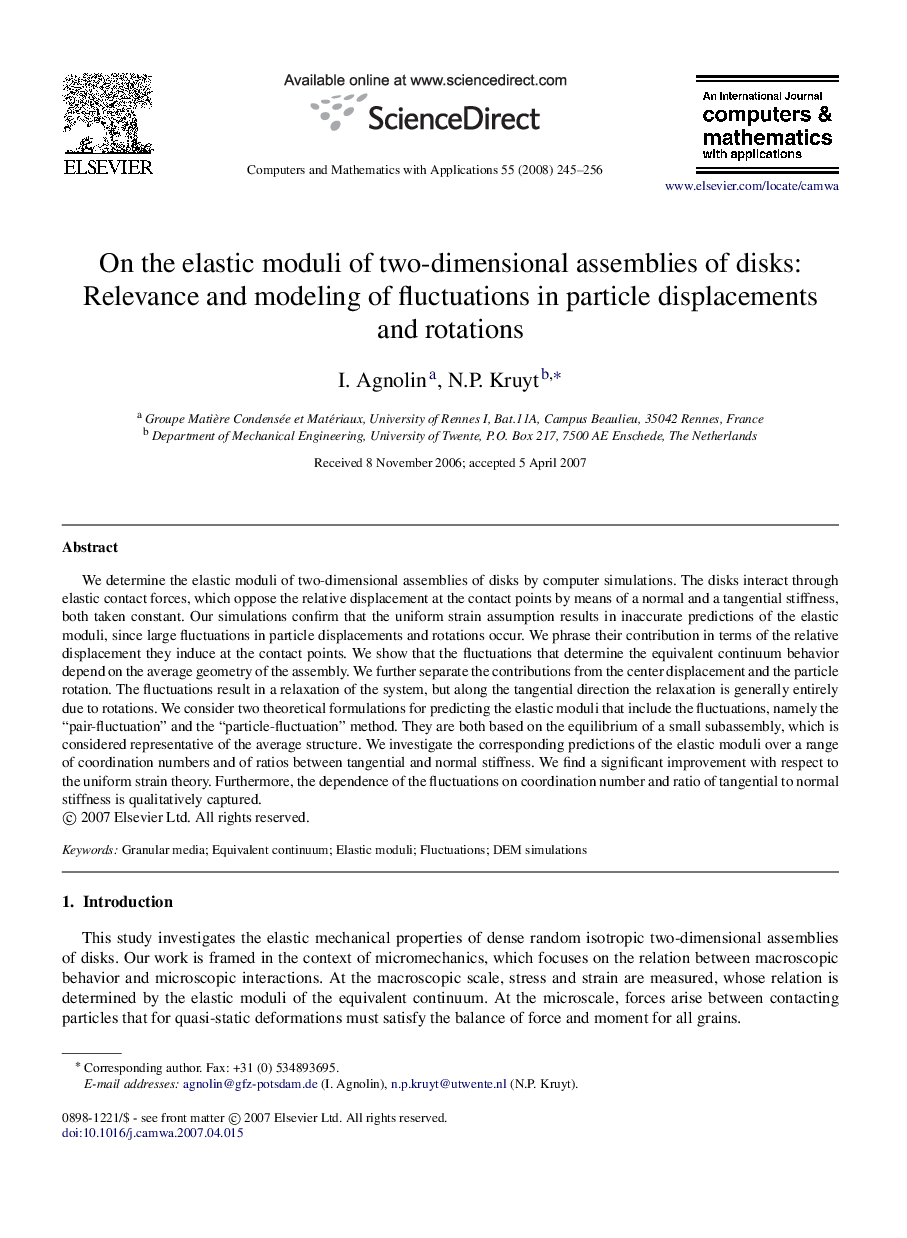| Article ID | Journal | Published Year | Pages | File Type |
|---|---|---|---|---|
| 472458 | Computers & Mathematics with Applications | 2008 | 12 Pages |
We determine the elastic moduli of two-dimensional assemblies of disks by computer simulations. The disks interact through elastic contact forces, which oppose the relative displacement at the contact points by means of a normal and a tangential stiffness, both taken constant. Our simulations confirm that the uniform strain assumption results in inaccurate predictions of the elastic moduli, since large fluctuations in particle displacements and rotations occur. We phrase their contribution in terms of the relative displacement they induce at the contact points. We show that the fluctuations that determine the equivalent continuum behavior depend on the average geometry of the assembly. We further separate the contributions from the center displacement and the particle rotation. The fluctuations result in a relaxation of the system, but along the tangential direction the relaxation is generally entirely due to rotations. We consider two theoretical formulations for predicting the elastic moduli that include the fluctuations, namely the “pair-fluctuation” and the “particle-fluctuation” method. They are both based on the equilibrium of a small subassembly, which is considered representative of the average structure. We investigate the corresponding predictions of the elastic moduli over a range of coordination numbers and of ratios between tangential and normal stiffness. We find a significant improvement with respect to the uniform strain theory. Furthermore, the dependence of the fluctuations on coordination number and ratio of tangential to normal stiffness is qualitatively captured.
